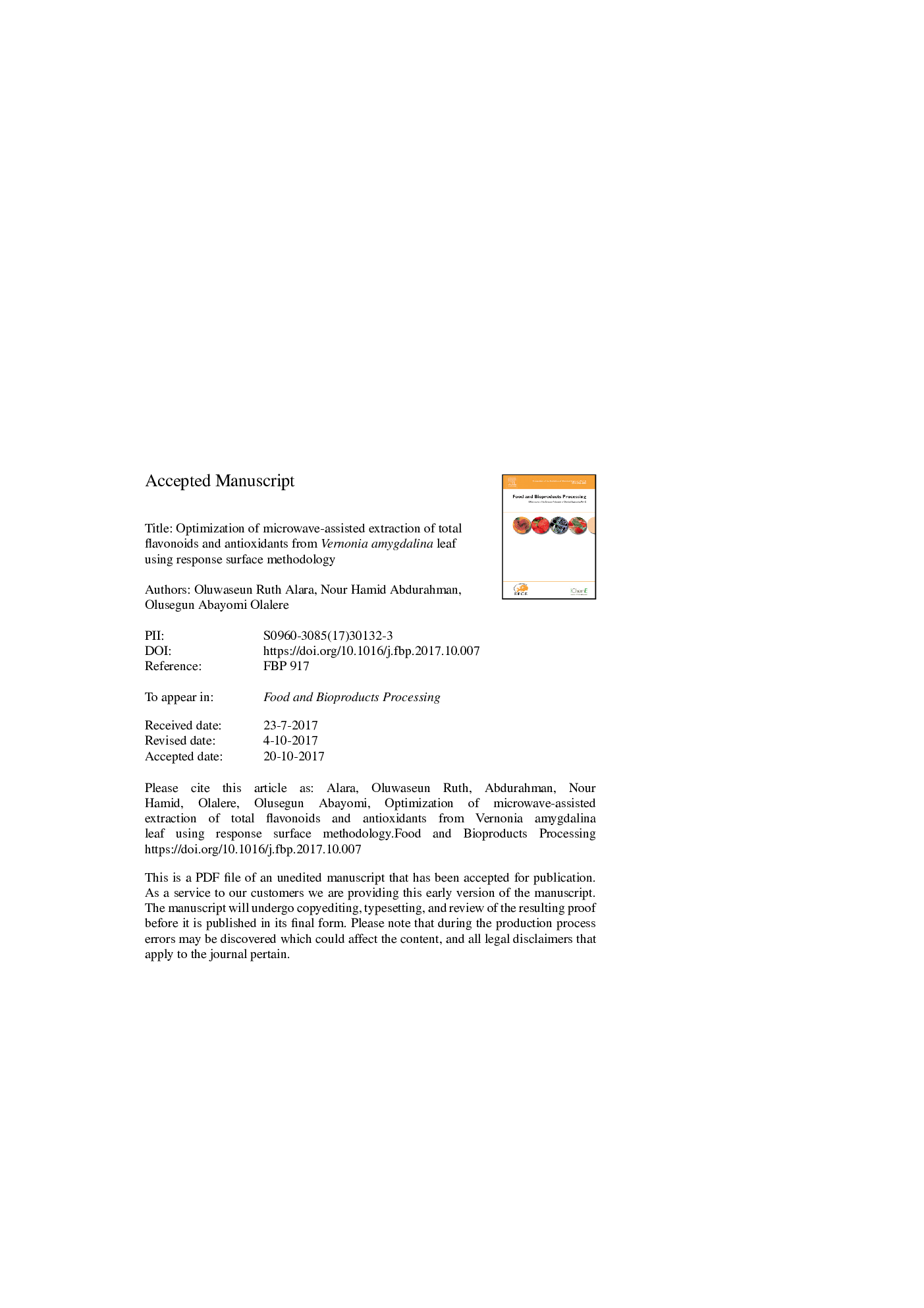| Article ID | Journal | Published Year | Pages | File Type |
|---|---|---|---|---|
| 6488392 | Food and Bioproducts Processing | 2018 | 22 Pages |
Abstract
In this study, the microwave-assisted extraction (MAE) variables were optimized using a face-centered central composite design of response surface methodology for optimal recoveries of total flavonoid content (TFC) and antioxidant capacities (DPPH and ABTS) of Vernonia amygdalina leaf extract. The independent variables were irradiation time (5-15 min), microwave power level (400-600 W), temperature (90-110 °C), and feed-to-solvent ratio (0.08-0.13 g/ml). The ANOVA results showed that TFC, DPPH and ABTS radical scavenging activities were significantly (p < 0.0001) affected by irradiation time, microwave power level and feed-to-solvent ratio, indicating a good agreement between the experimental and predicted values. The optimal conditions for maximum recoveries of TFC (87.05 ± 1.03 mg QE/g d.w. (n = 3)) and antioxidant capacities (DPPH scavenging of 94.05 ± 1.03% (n = 3), and ABTS scavenging of 95.93 ± 0.99% (n = 3)) were 7 min of irradiation time, 416 W of microwave power level, 100 °C of temperature, and 0.10 g/ml of feed-to-solvent ratio. More so, the optimized extract from MAE was compared with that of Soxhlet extraction technique, the extract from MAE possesses a high capacity of inhibiting antioxidants. Likewise, more chemical components from the GC-MS analysis were identified for the extract from MAE.
Related Topics
Physical Sciences and Engineering
Chemical Engineering
Bioengineering
Authors
Oluwaseun Ruth Alara, Nour Hamid Abdurahman, Olusegun Abayomi Olalere,
